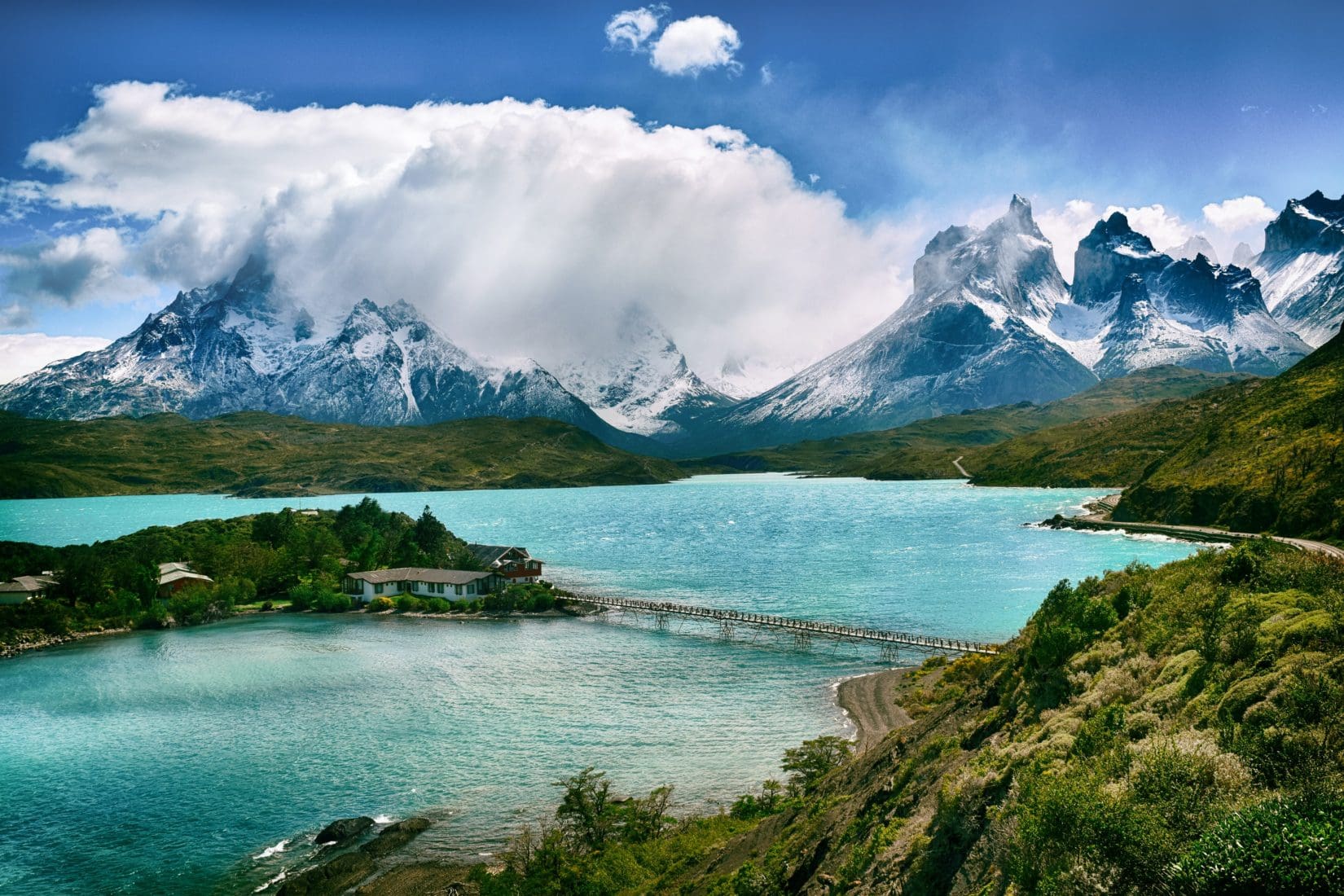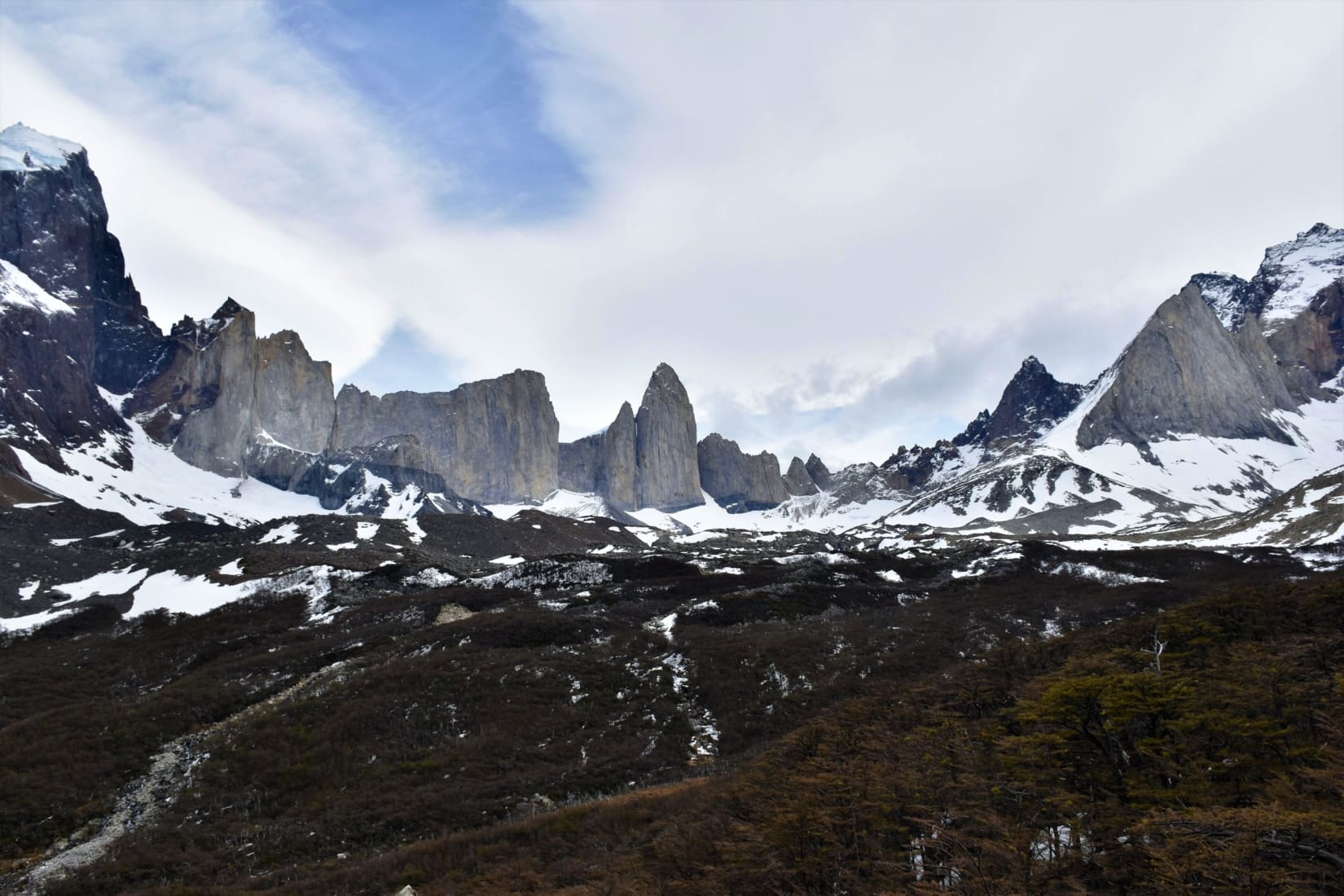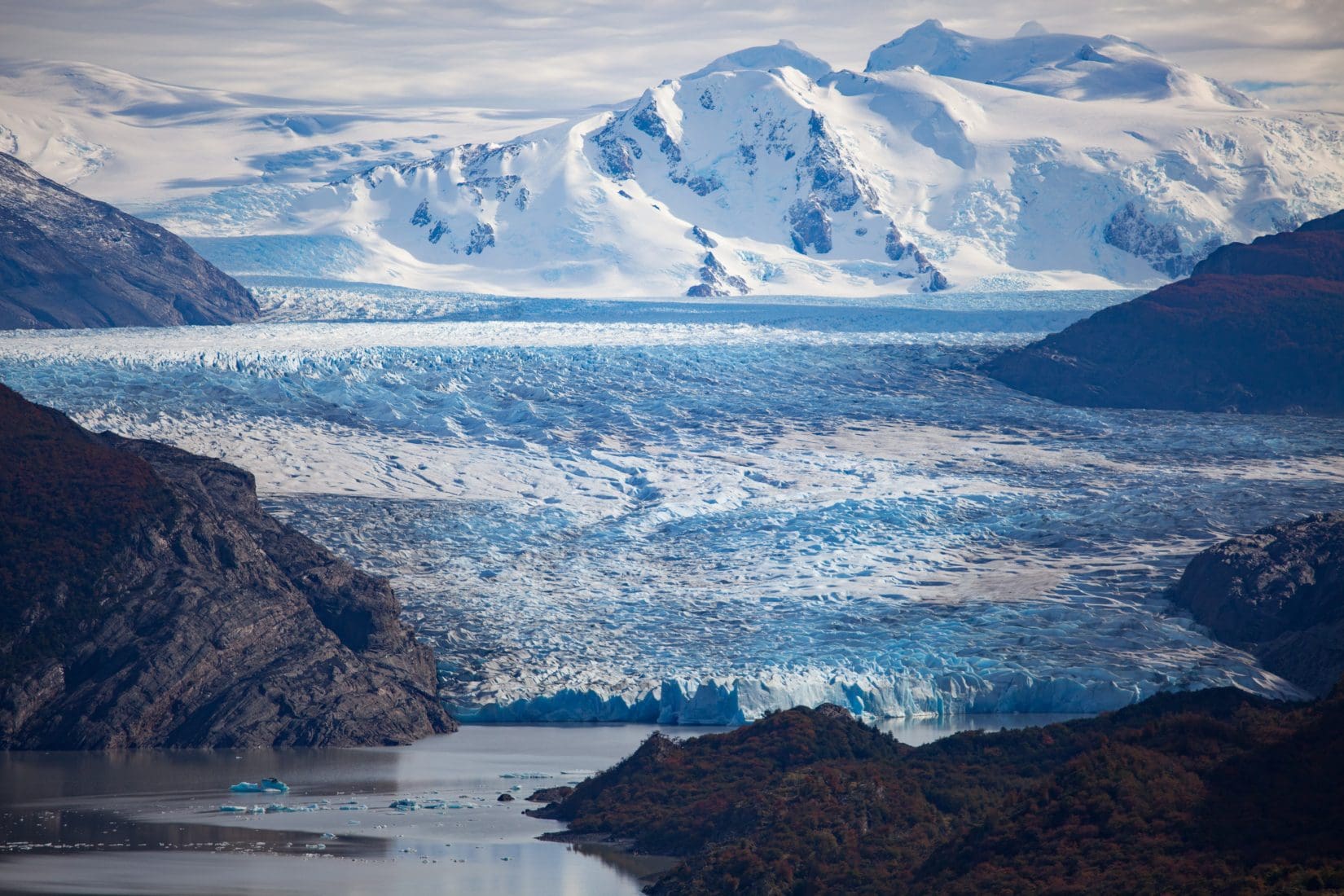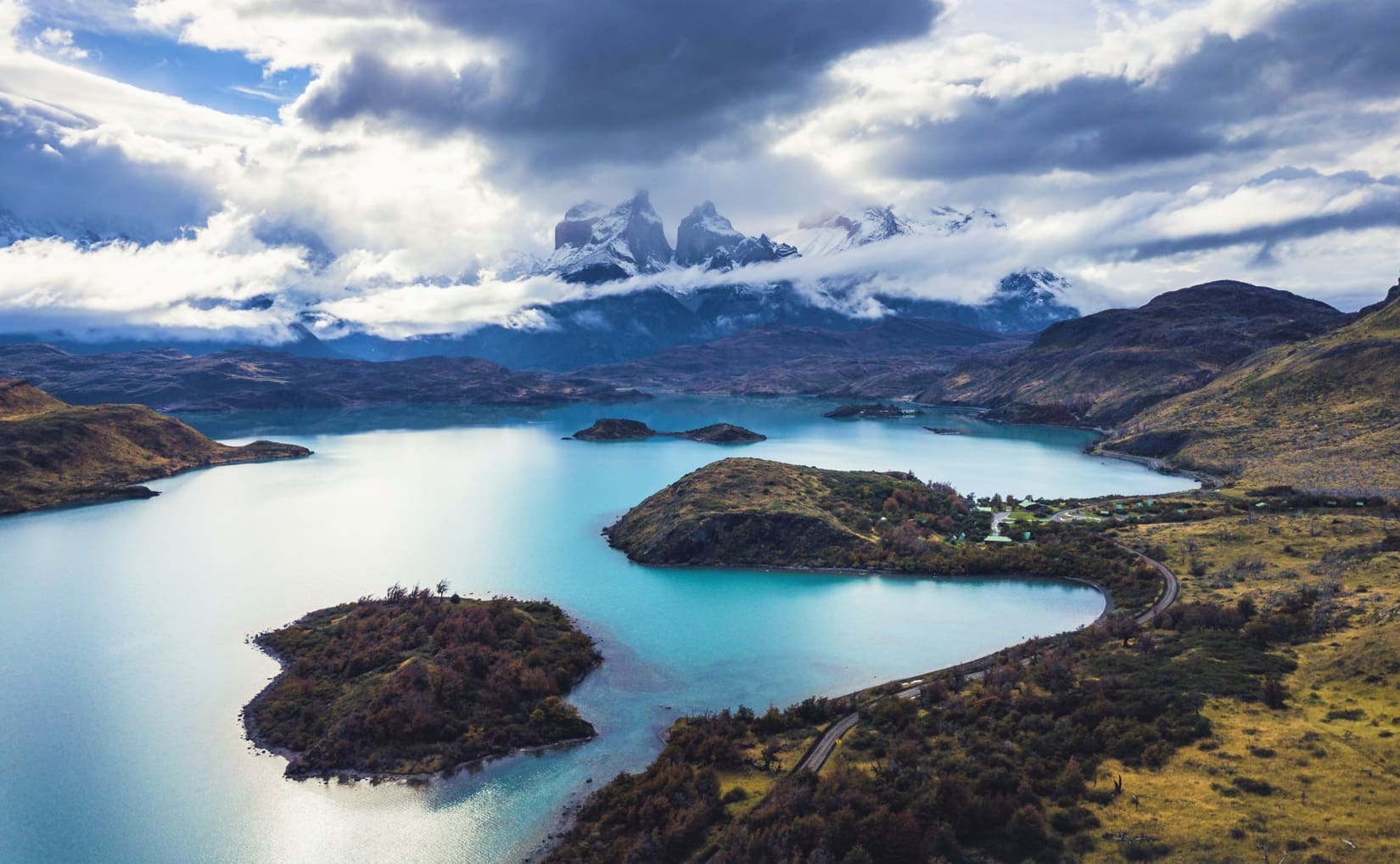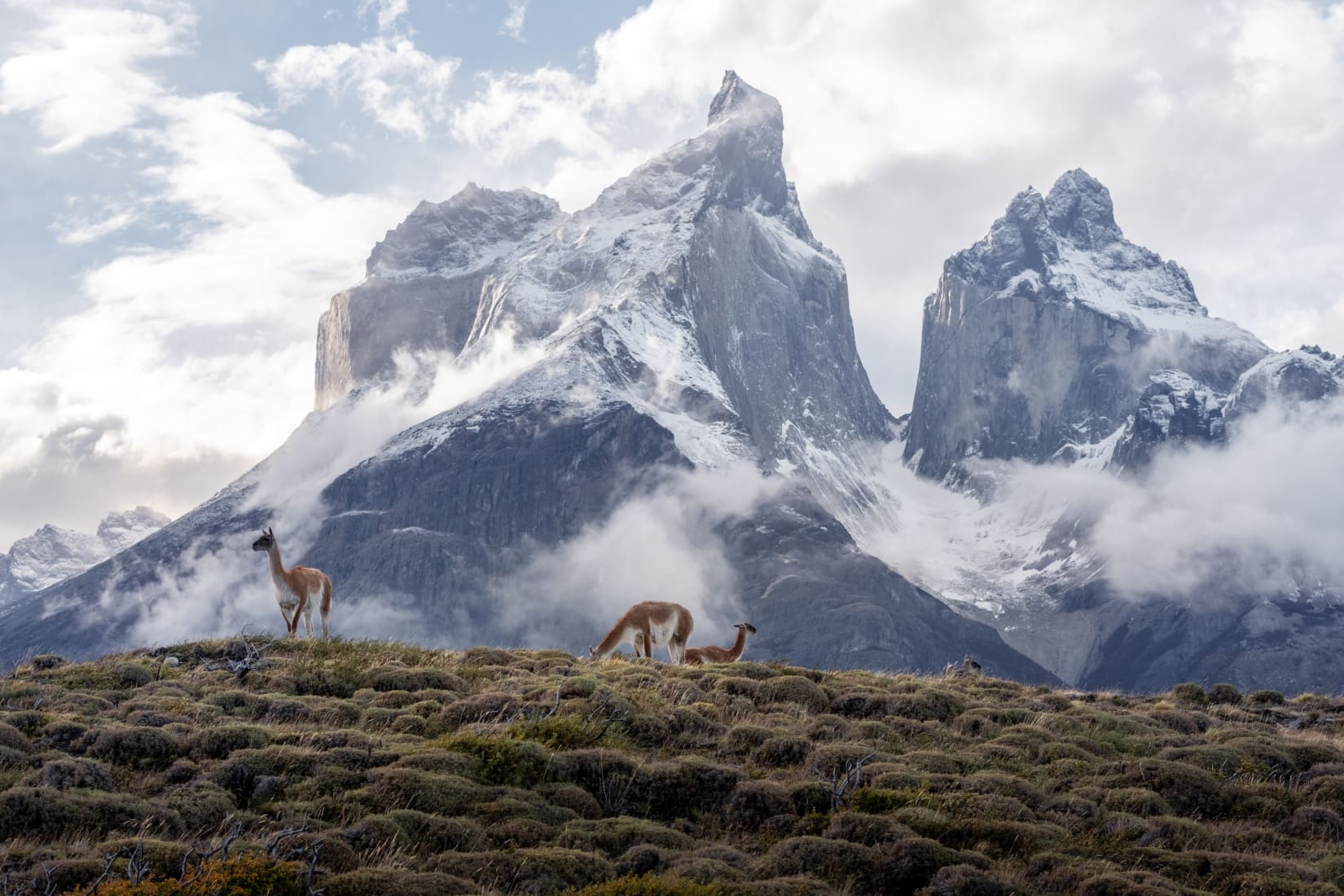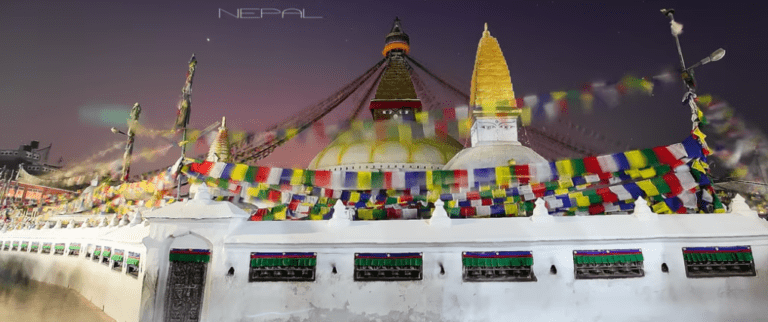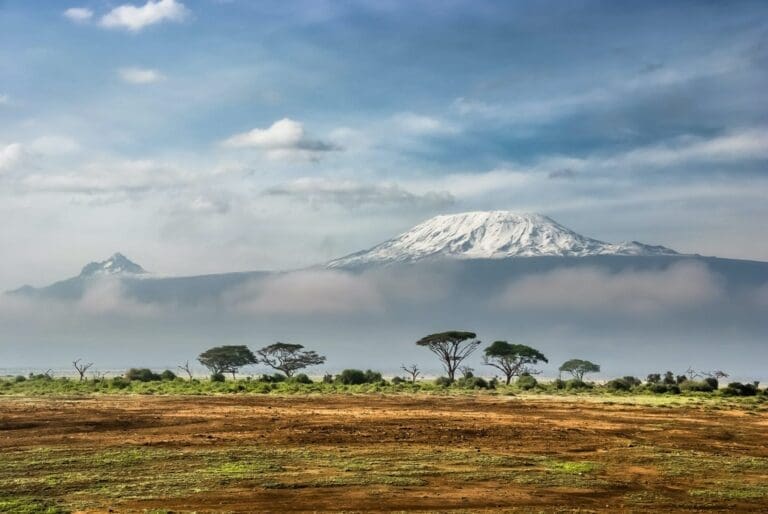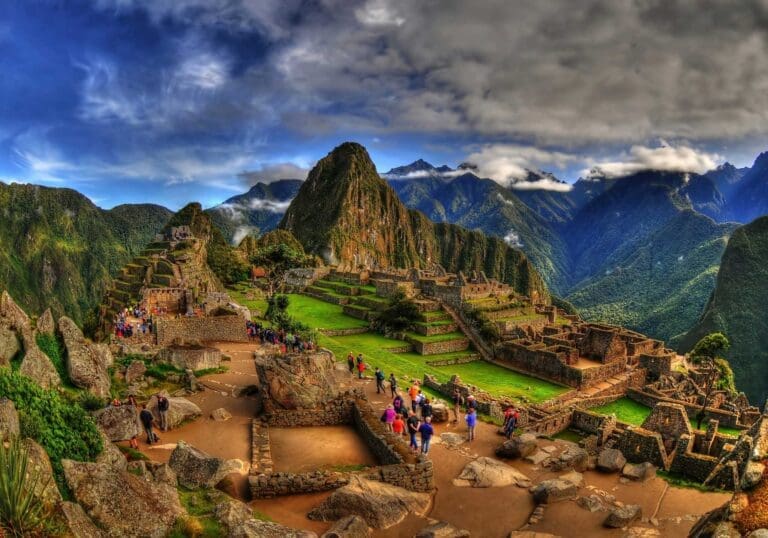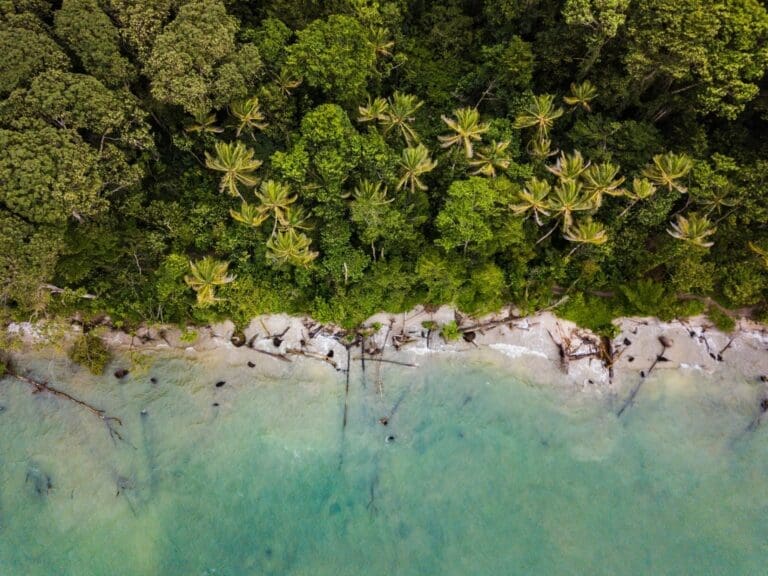19 Things to Know: Hiking the W Trek Torres del Paine 2025
So you’re interested in hiking the W Trek in Patagonia – one of South America’s most famous trails. The W Trek zigzags through the heart of Chile’s iconic Torres del Paine National Park, a land where the summits form stunning granite monolith towers and the lakes glisten a breathtaking turquoise blue. The trek is named after the W-shape it forms on a map, running along the base of the iconic mountains before doubling back into the Valle Francés (“French Valley”) at the very heart of the reserve.
This detailed guide will run through all the ins and outs of hiking the W Trek. It will cover the best time of year for hikers to visit this wild part of Chilean Patagonia, some challenges you can expect to encounter, top trip highlights, what gear you will need, how long you may spend in the wilderness, and much more. Happy exploring!
My experience hiking the W Trek
I’ve trekked extensively throughout the Andes, from the dizzying heights of Machu Picchu to the impressive glaciers of Argentine Patagonia, and have learned powerful life lessons from my adventures. However, I still remember the W Trek as one of the most amazing mountain adventures I have taken.
There’s a reason why it’s the most famous hiking trail in Patagonia. The scenery you’ll enjoy along the way is second to none – imagine jagged mountains that resemble massive shards of ice, milky mountain lakes, and the rolling Patagonian Steppe in the distance.

A personal highlight of the W Trek was the approach to Grey Glacier, which feels like one of the most untouched parts of Torres del Paine. The path to Grey Glacier along Grey Lake is stunningly beautiful and poses a nice challenge as you trek amongst chiseled sculpturesque mountains.
Adding to the physical beauty of it all, the hiking route is fantastically well-organized with designated camp / hut sites that boast gorgeous views of the national park, the trekking season is long, and wonderful local guides are available. I highly recommend you experience hiking the W Trek for yourself.
What’s in this guide to the W Trek?
- An introduction to Chilean Patagonia
- Where is the W Trek?
- The history of the W Trek and the Torres del Paine National Park
- Highlights of the W Trek
- How long is the W Trek? How many days are needed?
- Elevation and terrain on the W Trek
- Is the W Trek difficult?
- Preparation for the W Trek
- When is the best time of year to go?
- What do I need to pack for the W Trek in Patagonia?
- Accommodations: Where to stay on the W Trek
- W Trek permits
- Getting to the start of the W Trek
- Sample W Trek itinerary
- The 5-Day W Trek Circuit
- W Trek Express
- Alternative routes to the W Trek (O Circuit vs Q Circuit)
- Where to go after the W Trek
- Visas for Chile
1. An introduction to Chilean Patagonia
Chilean Patagonia is one side of the greater region of Patagonia. Altogether, it encompasses a whopping 400,000 square miles (that’s over a million square kilometers!) of land at the southern end of South America. It’s a diverse place, rolling from seemingly endless steppes inhabited by unusual Welsh-speaking farming communities to the jagged tops of mountains like the Fitz Roy and the Torres del Paine.
Ever since the first Spanish conquistadors started coming here in the 1500s, Patagonia has been seen as a land of myth and majesty. Open and vast like nowhere in Europe, it wowed explorers with calving glaciers and penguin-spotted islands, mirror-like alpine lakes, and whale-filled oceans. Today, the awe-inspiring nature of the region is still very much intact and trekking here is seen as a bit of a rite of passage a la the Himalaya.
Chilean Patagonia begins roughly 500 miles (805 kilometers) south of Santiago, the capital, and then arcs around the whole of the edge of the continent before finishing at the icy channels of the Tierra del Fuego archipelago. It’s all pretty wonderful, but most agree that the zenith is the Torres del Paine National Park, which is where you’ll be doing the W Trek.
2. Where is the W Trek?
The W Trek leads you to the most famous part of Chilean Patagonia: The Torres del Paine. They’re a trio of incredible granite tower peaks that look like daggers shooting straight out of the earth. At their closest point, the three towers are just 12 miles (19 kilometers) from the Argentina border. The nearest main town is Puerto Natales, Chile.
More generally speaking, the W Trek takes you down to the ice-capped, snow-dusted ends of the continent, less than 400 miles (645 kilometers) from Cape Horn. It’s truly a wild part of the planet you must see!
3. The history of the W Trek and the Torres del Paine National Park
Arguably the most famous corner of Chilean Patagonia, the serrated tops of the mighty Torres del Paine massif became the centrepiece of their own national park back in 1959. But you have to go back almost 80 years more to discover the moment when the region first entered the limelight.
Yep, Scottish travel-writing pioneer Lady Florence Dixie blazed a trail here during her South American travels in the late 1880s. Her prose recalls “three tall peaks of a reddish hue” stood before plains of ripe berry bushes and grazing guanacos.
Her descriptions piqued the interest of others. Finnish geologist Otto Nordenskjöld took a break from his polar explorations to visit the region in the 1900s. Then came the missionary-mountaineer Alberto María de Agostini en route to his epic crossing of the Southern Patagonian Ice Field.
It wasn’t until the end of the 1950s that the region was designated an official national park by the Chilean government. It was originally known as Grey Lake National Tourism Park but was subsequently given its modern name in the 1970s, the same decade it was dubbed a prestigious UNESCO World Biosphere Reserve.
It was also the 1970s that saw the formation of the famous trails. That was spearheaded by a team of local rangers in conjunction with British explorer John Garner (who now has a pass named after him in the range). They laid the foundations of the now-iconic circular route that encompasses the whole massif, including the W Trek section itself.
4. Highlights of the W Trek
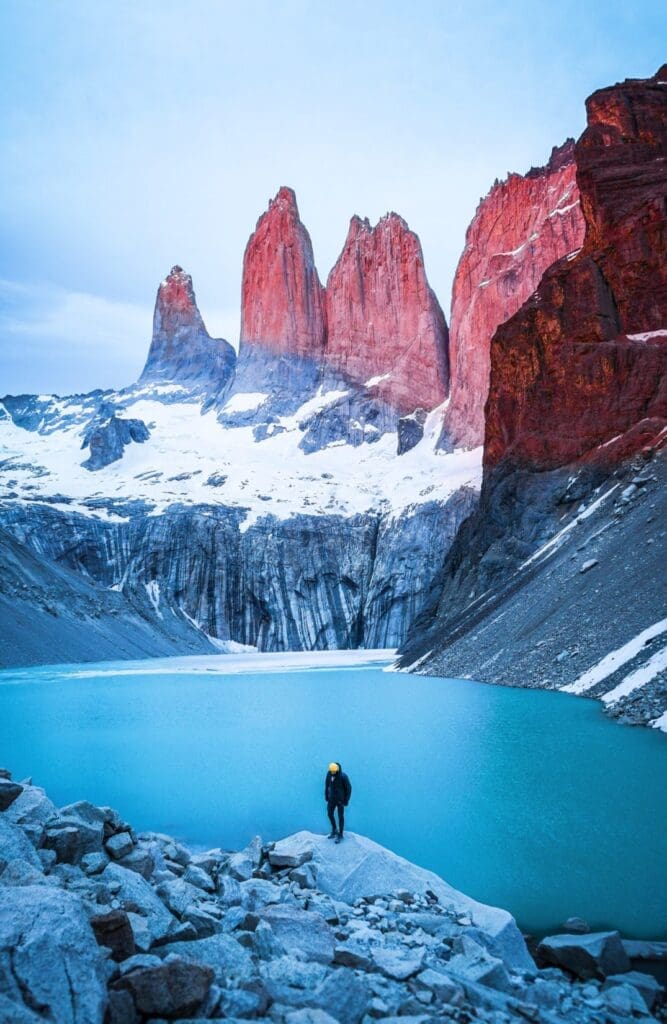
If you’re looking to be wowed by the sheer majesty of hiking in Chilean Patagonia, then yes, the W Trek is most certainly worth it. This relatively low-altitude trek takes you through areas of the national park that are widely considered to be the most incredible places in Patagonia. In a region that’s beset by ice fields and soaring peaks, that’s really saying something!
The W Trek requires a commitment of about 4-5 days of hiking, on average. What’s great is that there is something special to see on every single day of the journey. Views abound from start to finish and there’s always another W Trek highlight to look forward to. The most impressive parts of the trek are:
5. How long is the W Trek? How many days are needed?
The distance of the W Trek is approximately 55 miles (88.5 kilometers) long. One of the great things about this hiking route is just how versatile it can be. It’s easy to chop, change, and add to the W Trek itinerary so you’ll find everything from 4-day treks to 7-day ultimate treks on the menu.
There are many different distances reported by various sources for the W Trek. The below is what I have personally tracked via GPS while hiking the East to West route for 5 days.
Day 1 – Central Sector to Central Sector (Base Torres Hike)
- 13.5 miles / 22 kilometers
Day 2 – Central Sector to Francés Sector
- 11.5 miles / 18.5 kilometers
Day 3 – Francés Sector to Paine Grande (including Mirador Britannica Lookout)
- 15 miles / 24 kilometers
Day 4 – Paine Grande to Grey Mountain Refuge
- 7.5 miles / 12 kilometers
Day 5 – Grey Mountain Refuge to Paine Grande / Lake Pehoé
- 7.5 miles / 12 kilometers
If you plan to do the W Trek in 4 days then your Day 4 (Paine Grande to Grey to Paine Grande) will be 15 miles (24 kilometers) in length.
W Trek Map
Need help visualizing the trail? Check out the W Trek map below. This detailed Torres del Paine W Trek map breaks the 4-day route into color-coded days, showing key landmarks like Grey Glacier, Frances Valley, and Base of the Towers.
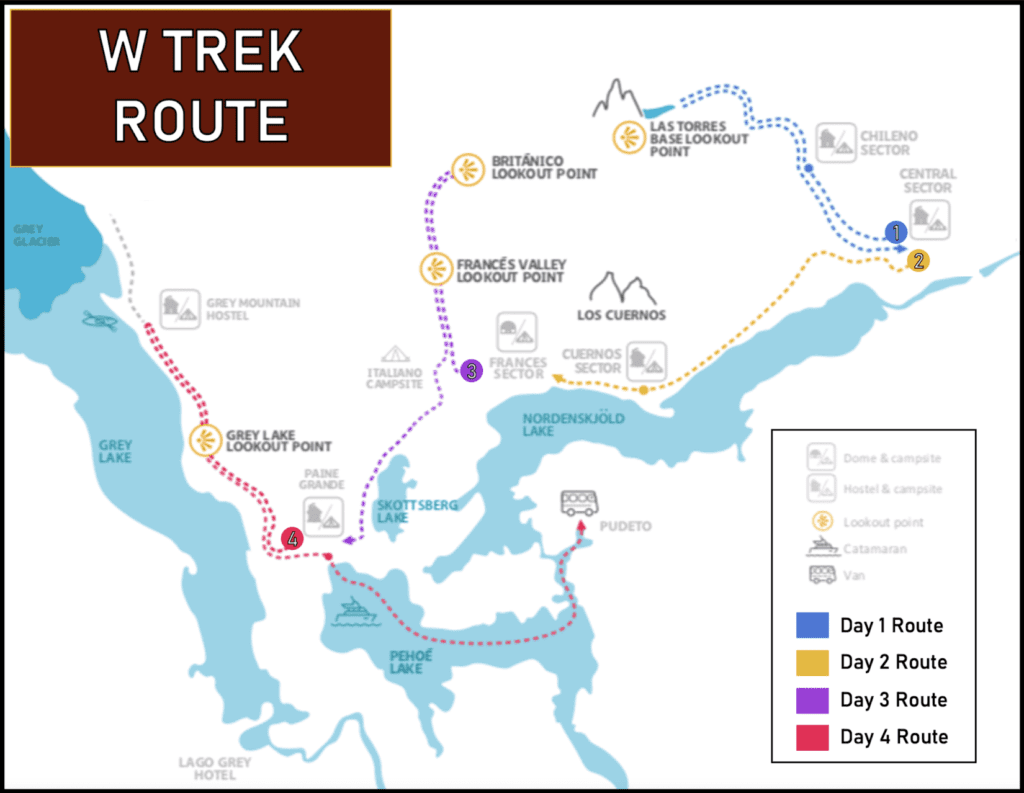
You can do the trail in different directions. There are ways to skip one leg of the journey and add on extra excursions. So long as you follow the basic idea of a W-shaped route through the Torres del Paine park and include a trek into the stunning French Valley along the way, you can rest assured that you’ll see the Patagonian national park’s highlight attractions.
6. Elevation and terrain on the W Trek
The pinnacle of the W Trek reaches 2,788 feet (850 meters) above sea level. Now, that might sound positively low for veterans of Everest Base Camp, Mount Kilimanjaro, or the Inca Trail – and it is.
However, where this trek gets tricky is in elevation gain and loss and the daily distances. Some sections of the W Trek see hikers clock up altitudes of over 2,000 feet (610 meters) in just a few hours, only to lose it all again that afternoon as they head to the rest site for the night. You’re likely to notice this most after the hike to the base of Las Torres, which is followed a few days later by the ascent into the French Valley.
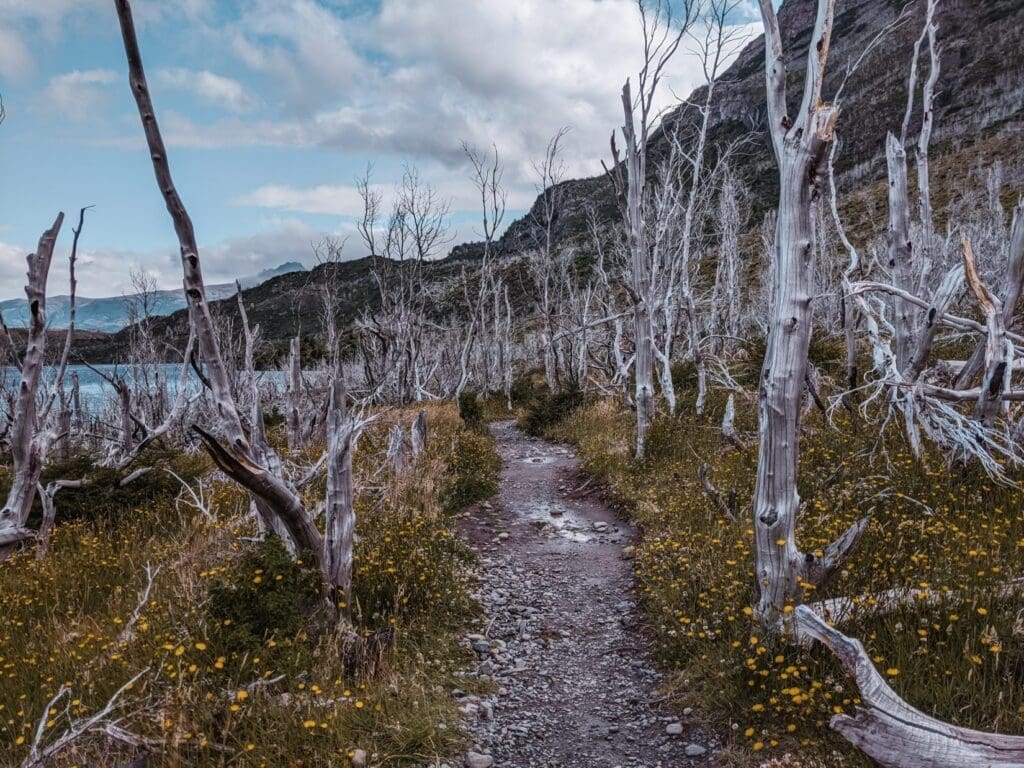
The good news is that there’s zero technical climbing on the W Trek. The trek is on a mix of well-maintained paths, packed mud, loose gravel, and stones. There are some parts where you may need to navigate wet rocks, low streams, and cable bridges, but there’s nothing overly challenging on the route itself in terms of terrain.
7. Is the W Trek difficult?
The W Trek multi-day hike isn’t a cinch, but it’s also not on the same level of difficulty as other world-famous hikes such as Mount Kilimanjaro or Everest Base Camp. So how hard is the W Trek in Patagonia’s Torres del Paine? Well, there’s no technical expertise needed and you don’t have to acclimatize. The trail is well-marked and maintained for a majority of the route.
I’d say one of the the biggest challenges is the unpredictable weather, which can change from snow to heavy rain to blazing sun in just a matter of hours. In addition, Torres del Paine is known for its extreme winds which can reach speeds of up to 100 mph (161 kph).

The W Trek also packs a lot of walking into single days. For comparison, you are asked to hike between 6-8 miles (9.7-12.9 kilometers) per day on average on an Inca Trail tour.
However, on the W Trek, you can expect to hike between 7.5 miles (12 kilometers) and 15 miles (24 kilometers) per day depending on how your adventure is structured. I highly recommend a training plan that builds in long distances (over 10 miles / 16 kilometers per day) and consecutive day hikes.
8. Preparation for the W Trek
We’ve already mentioned how the W Trek isn’t up there with Kilimanjaro and other high-altitude expeditions. Most trekkers of decent fitness level should be able to complete it with a solid training schedule beforehand. That said, the days are long on this one – some pack in up to 10 hours of hiking across tough terrain that can get tougher when the weather changes.
For that reason, we’d say a good program of regular exercise starting around 12 weeks prior to the start of your hike is always a good idea. Begin with local walks of 2-3 hours and short runs of just a few miles each. By six weeks out, you should be able to up your runs to three miles and complete a hike of 7-9 continuous hours. With three weeks to go, try to double your number of runs and do weekly hikes of at least 7-9 hours each.
I also recommend that you begin doing consecutive day hikes at this time and ensure you are wearing a pack with the same weight you will bring with you on the trek. Resistance training can also work wonders for muscle fatigue and recovery, something that’s often an issue with such long days on the W Trek.
Don’t overlook the importance of training in variable conditions. Patagonia’s weather is unpredictable, with sudden rain, strong winds, and even snow possible in any season. If possible, train in different environments—hike on windy days, tackle wet trails, and wear your full gear, including rain layers and a loaded pack. This will help you build endurance and ensure you’re comfortable managing gear adjustments on the go.
9. When is the best time of year to do the W Trek?
The seasons can be very unpredictable this far south in Patagonia. As a general rule, summer (November to March) is better for trekking, making it the peak season for hiking the W Trek in Torres del Paine. That’s because it’s warmer, with midsummer temperatures typically between 43-63°F (6-17°C), and there’s less rain (average of just 4 millimeters each month).
However, it’s not totally clear cut that the summer season is the best time to hike the W Trek. It all depends on your preference and the type of experience you’re looking for. There are way more people hiking the trail so the W Trek lookout points are busier and the mountain huts more expensive. Additionally, high summer winds can spoil a hike in Patagonia so you’ll have to be ready to change plans if the gusts get up to over 80 mph (130 kph) or so.
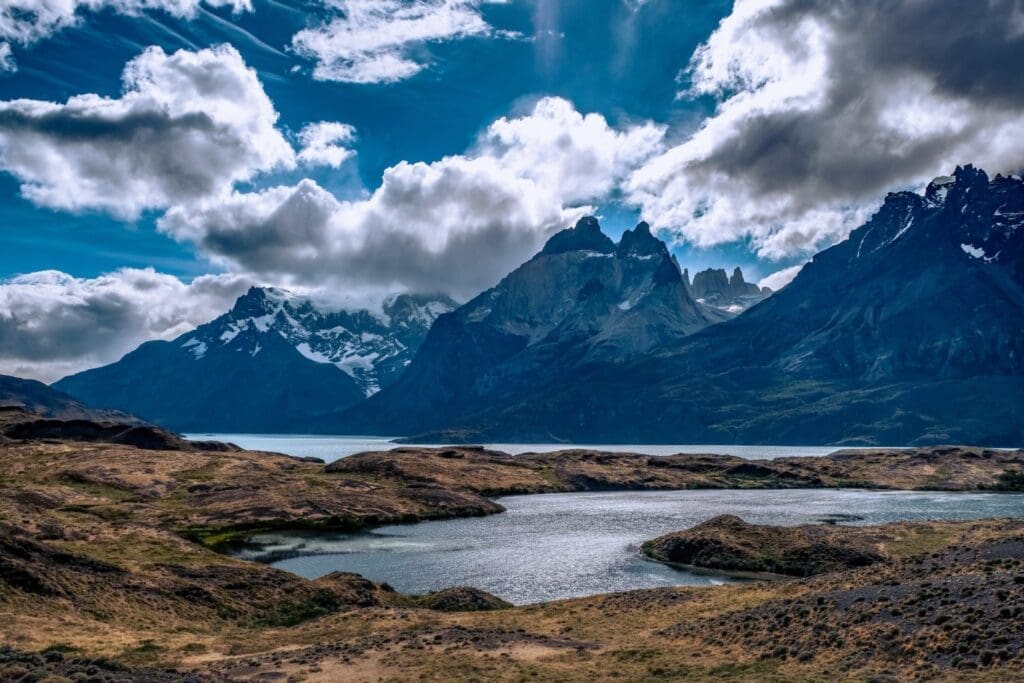
Autumn (April is a good alternative to the main summer trekking season. The upsides include fewer hikers and beautiful colors on the Patagonian Steppe – think pale yellows, deep oranges, and muted browns rolling out from the base of the mountains. However, there is usually more rainfall and the temperatures at night get low. Keep in mind that the main W Trek route closes on April 30th each year.
Spring (September to November) is another popular time to hike the W Trek but this season can bring the risk of snowfall. This means you’ll need to pack extra thermals. The W Trek route typically opens in mid-September each year. However, a few of the huts are closed until October 1. So, if you want to do the Trek in September you will need to do an amended version.
Winter (May to August) a majority of the huts and campsites along the standard W Trek route are mainly closed due weather conditions and snowfall. However, it is possible to do three of the four segments of the W Trek as out and back hikes by staying in two of the refugios that are open during the Winter months.
Also, please note that there are fixed group dates for these excursions and the treks are guided by a professional mountain guide which is required by the National Park for safety reasons.
We offer trips all year long on the W Trek. Click HERE to learn more.
10. What do I need to pack for the W Trek in Patagonia?
Your W Trek packing list will depend on when you decide to visit Torres del Paine to hike the trail, but try packing as light as possible. Travelers in the high season (summer and autumn) won’t need as much thermal gear as those visiting in the low season (spring and winter), when there’s a bigger risk of snow and sub-zero temperatures.
That said, every hiker’s W Trek packing list should have a good thermal under-layer, a fleece, and waterproof outer layers for the upper and lower parts of your body. The weather can be pretty wild and unpredictable, even in the height of summer, so it’s a good idea to bring multiple layers to wear.
When it comes to trekking equipment, there are some must-haves: sturdy walking boots, a good set of trekking poles, a high-volume and lightweight water bottle and/or reservoir, sunscreen, and a reliable waterproof trekking backpack. Depending on how you choose to do the trek, you may also need camping equipment and a sleeping bag.
Note: when booking with us, sleeping bags will be ready for you in both the mountain hut and/or tent at each sector, and you are also provided a ‘welcome kit’ that includes a sleeping bag liner, water bottle, map, and personal towel at your Pre-Trek Briefing in Puerto Natales.
Also, drinking water is not treated at huts/campsites along the trail. Many hikers feel comfortable drinking the water along the route (including from rivers or streams). But, if you prefer additional protection and peace of mind, you can certainly bring your own portable water filter (e.g. Katadyn BeFree, LifeStraw, Grayl, Sawyer Squeeze, etc.). Some of these systems only weigh a few ounces!
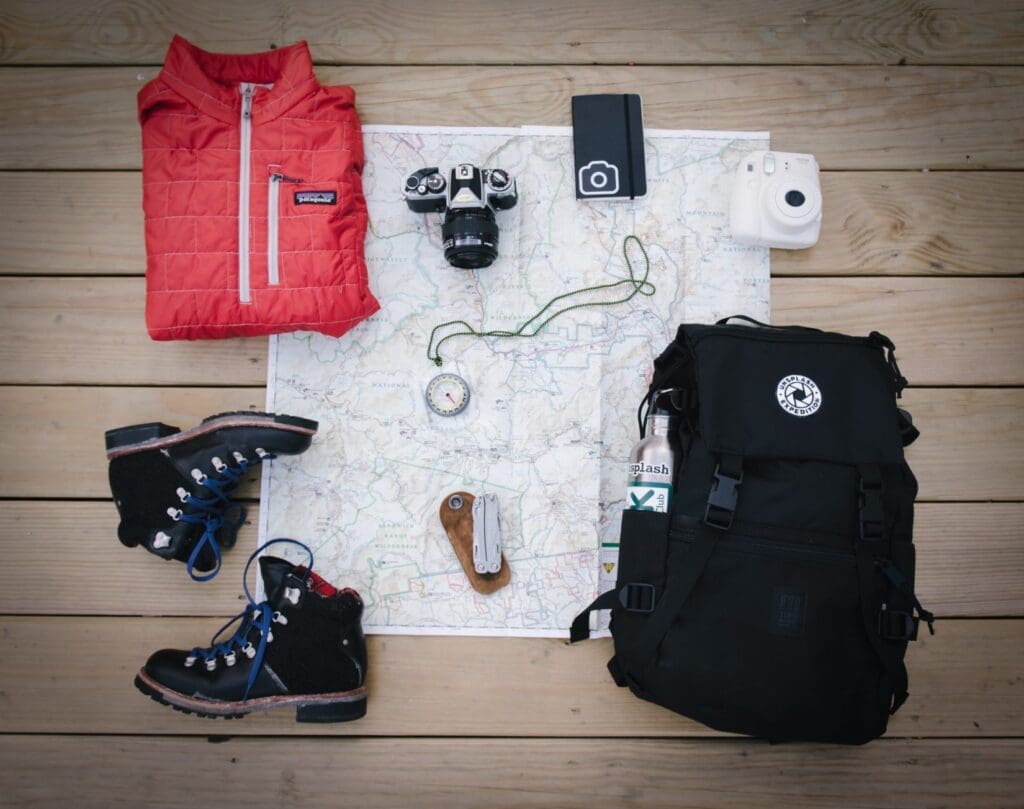
Some hikers will go for a porter service on their W Trek trip to help carry baggage and equipment. That’s an optional extra with most providers. A porter on the W Trek will typically carry 33 pounds (15 kilograms) of your clothing and gear. Keep in mind that if you do decide to get a porter, you won’t need one on the Base Towers hike as this day is an out and back trek.
In addition, if you are doing the 4-day trek from East to West you also won’t need a porter for the last day as you can pay a small fee to leave your baggage at Paine Grande while you trek to Grey.
My team at The Explorer’s Passage makes it easy for trekkers who plan their travels with us. Because the requirements for the W Trek change with the seasons and the sort of trek you go for, we can provide our guests with a full packing list so they’re fully prepared – just ask us!
11. Accommodations: where to stay on the W Trek
There are a number of options when it comes to accommodations on the W Trek. Depending on the sector you are staying in, the options include standard camping, premium camping, cabanas, refugios / mountain huts, and hotels. I’m going to describe each of these options in greater detail below:
Standard Campsites
For the most part, the campsites on the W Trek are of very high quality, at least for true backcountry camps. They’re well equipped with all the things that trekkers might need, and even have extras that you could only dream of in the far-flung basecamps of other major trails.
Take the site at Paine Grande, for instance: it has hot showers during designated times each day, bathrooms, access to the restaurant and bar at Refugio Paine Grande, and even pay-as-you-go Wi-Fi. At the various campsites, some of the tents are set up on the ground and others are set up on wooden platforms.

Premium Camping
A few of the campsites on the W Trek circuit have a newer concept known as premium camping, which consists of a raised tent approximately 6 feet (1.8 meters) off the ground and has a ladder for access. The tents in premium camping are larger and sturdier than in standard camping, and there is no need for mattress pads as the entire base floor of the tent consists of a ~3-inch (7.6-millimeter) comfortable pad.
Currently, premium camping is currently available at Chileno and Francés Sectors but there are plans to bring this concept to more sectors (such as Central Sector) on the W Trek in the coming years.

Cabanas (cabins)
At Cuernos Sector there is a wonderful accommodation option known as cabanas (cabins). They are mini villas that dot the landscape around the main refugio building and are private accommodations that can fit 1-3 people. There are bathrooms and showers that are shared by all guests who are staying in the cabanas.
Most of our guests doing the East to West W Trek hike directly from Central Sector to Francés Sector on Day 2 of their hike, which is ~11.5 miles (18.5 kilometers). Chileno is located ~9.5 miles (15.3 kilometers) from Central Sector and is 2 miles (3.2 kilometers) short of Francés Sector.
So, if you would like private indoor accommodations, then you can sleep in a cabana (cabin) at Cuernos for the evening. Just note that if you do choose to sleep at Cuernos on Day 2 of your trek then it will tack on ~2 miles (3.2 kilometers) to your trip on Day 3 of your hike.
Refugios / Mountain Huts
Refugio is the local name for a refuge or shelter that’s essentially a mountain hut or lodge that offers dorm-style (bunk beds) accommodations along the W Trek. Refugios are rustic but comfy, and typically have warm communal areas with dining halls where you can meet and mingle with other trekkers. The bathrooms and showers at the refugios are communal.
Some of the refugios have bar areas, like Central and Paine Grande sectors. Many of the refugios have small shops where you can purchase an assortment of goods such as water, soda, energy bars, eggs, noodles, toothpaste, toothbrush, and clothing.
All of the main refugios on the W Circuit have Wi-Fi for an additional fee as well. Depending on which sector you are in, the number of people per room will differ. The room size on the W Circuit ranges from 2-8 people.
Hotels
On the standard W Trek route there is only one hotel option, Hotel Las Torres, which is located in the Central Sector. Hotel Las Torres is a very nice 4-star hotel located approximately 100 yards (nearly a meter) from the refugio and camping area at Central sector.
If you are doing the East to West Route, then you will most likely be spending two nights in the Central Sector as your first day of hiking is an out and back trek. We have many guests who stay at Hotel Las Torres for the first two nights of their journey, then do either camping or huts for the remainder of the trip.
Please note that EcoCamp is located in the Central Sector. While not a traditional hotel, EcoCamp consists of luxury domes of different sizes and amenities. We have many guests that stay in EcoCamp for a few nights as part of their W Trek journey.
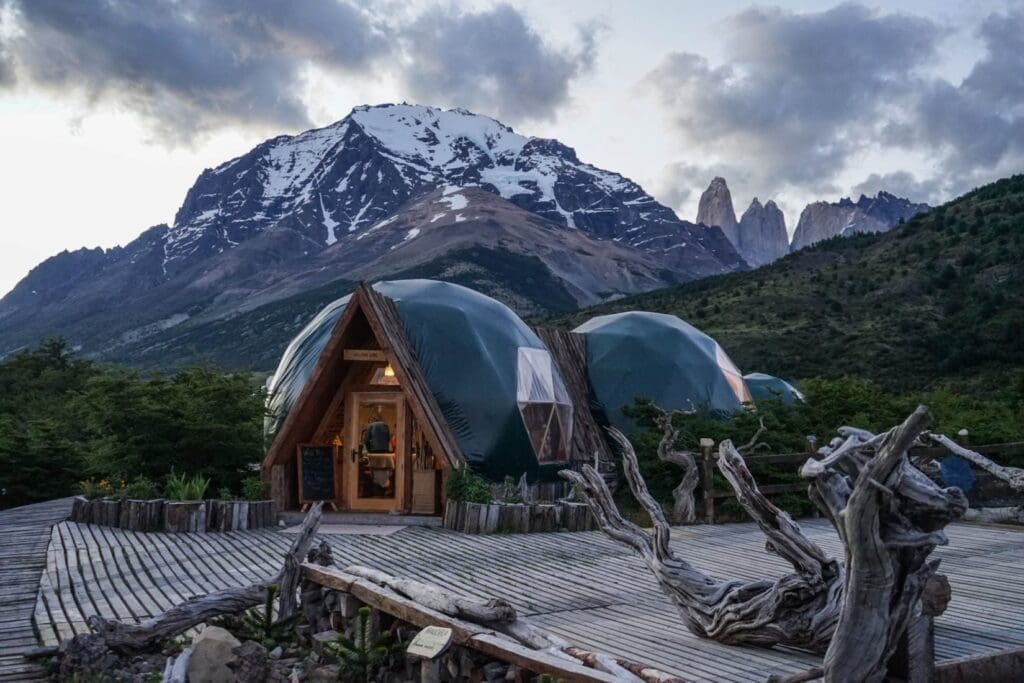
If you would prefer to stay in a hotel every night while in Torres del Paine, there are six wonderful hotels that offer all-inclusive programs for their guests. Please note: If you stay in one of these hotels you won’t be able to do the full W Trek. However, you will be able to do some of the W Trek segment hikes as guided day trips with vehicle / boat support to the trail heads.
At the all-inclusive hotels in Torres del Paine, you get to choose between a range of guided hikes and adventure activities, many of which are included as part of your package.
Below is a list of the main all-inclusive hotel properties in Torres del Paine:
Hotel Las Torres
4-Star Hotel
Located in the Central Sector, 100 yards (~1 meter) from the Central refugio and camping
Hotel Lago Grey
4-Star Hotel
Located in between the south shore of Grey Lake and Lake Pehoé
Explora Lodge
5-Star Hotel
Located near the southern shores of Lake Pehoé
EcoCamp Patagonia
5-Star Domes
Located on a hilltop overlooking the Central Sector
Tierra Patagonia Hotel & Spa
5-Star Hotel
Located in on the Eastern shore of Lake Sarmiento de Gamboa
Awasi Patagonia
5+ Star Hotel with 14 private villas
Located East of the Central Sector in a private reserve
Sectors
The W Trek is punctuated with a host of rest areas and the conventional plan of the hike makes use of seven of these Sectors along the way. Let’s take a closer look at each rest site:
One important item to note is that if your group size is below the minimum room size in the refugios, then other travelers will fill the empty spots on the rooms. Guests are not permitted to purchase the extra room spaces to create a private room.
Since the sectors are run by three different companies and itineraries often require a separate reservation, booking accommodations for the W Trek can be a chore. It doesn’t have to be, though! The Explorer’s Passage makes visiting Torres del Paine easy. Book your trip to Patagonia with us and let us take the stress out of planning so you can focus on hiking the W Trek. Also, with us, all meals are included from the start of the hike to the finish.
12. W Trek permits
In planning this journey, you may ask yourself “Do I need a permit for the W Trek?” Although you’ll need an entrance ticket to enter Torres del Paine National Park, there’s no official permit system for the W Trek as there is for the classic Inca Trail route to Machu Picchu.
There are, however, capacity limitations on the number of trekkers that are permitted to stay in the park’s campsites, huts, cabanas (cabins), and hotels. That acts as a sort of de facto limit on the number of people who can do the trek, governed mainly by who was quick enough to book their accommodations.
My advice? Start planning early to avoid disappointment. The huts, campsites, and cabanas (cabins) go on sale in May and June each year for the upcoming trekking season which typically goes from September 8 to April 30. Spaces in Central, Chileno, Cuernos, and Francés Sectors are typically released in early to mid May.
Spaces for Paine Grande and Grey sectors are typically released in early to mid June. I typically recommend that our guests try to get their bookings in before the first release dates to ensure they get their desired spots.
If you would like help with this process, you can plan to travel with us and our experienced team will take care of all the important details for you, including campsite, hut, cabana (cabin), and hotel bookings, meals, National Park permits, transfers, gear rentals, and much more.
13. Getting to the start of the W Trek
Most people start the W Trek hike with an organized bus transfer from the city of Puerto Natales to Torres del Paine National Park.
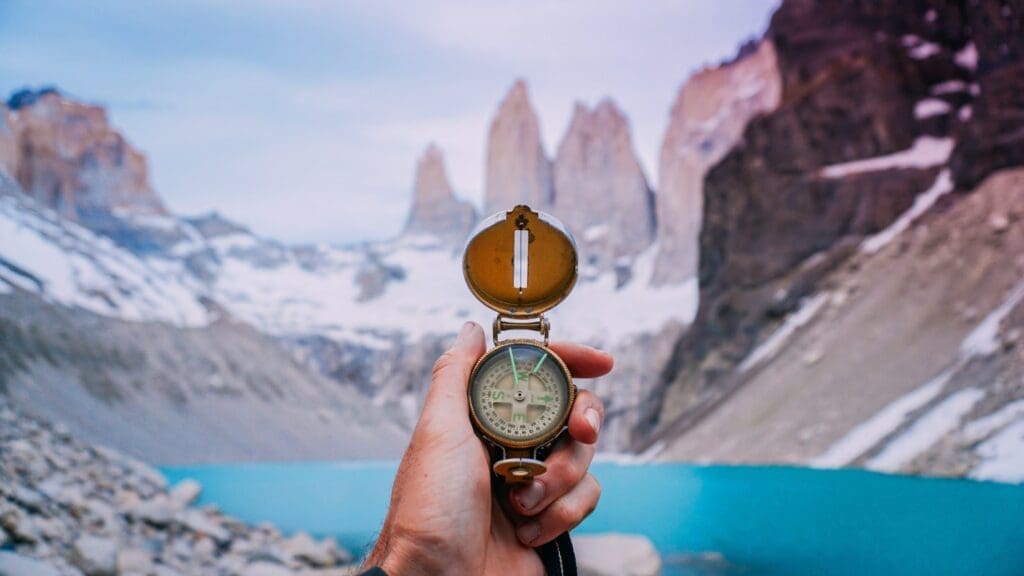
Your journey to the trailhead of the W Trek will depend on which direction you will be hiking it: either from East-to-West, or vice versa. At The Explorer’s Passage, we recommend East-to-West, primarily because you get the hardest day of hiking (to and from Las Torres Lookout Point) out of the way on the first full day, when your legs are still fresh.
However, some prefer to save the view of these granite towers as a reward for the final day, so they start the journey in the West and head East. As with all adventures, there are pros and cons to each option!
All of the above trips can be done from Punta Arenas, but expect transfer times to the trailhead to be in the region of five to six hours, instead of a 2-3 hour bus ride from Puerto Natales.

14. Sample W Trek 4-Day Hike itinerary
As noted in the prior section, at The Explorer’s Passage we recommend hiking the W Trek from east to west. Below you will find a sample itinerary for this option (visit our W Trek trip page to download a full detailed itinerary):
If you prefer to hike the W Trek from west to east, culminating with an up-close encounter with the iconic towers themselves, here is a sample itinerary:
These sample itineraries are just a start and the opportunities are endless. Regardless of whether you’re traveling solo or in a group of any size, our expert Adventure Consultants will craft extraordinary itineraries for your private travel needs. See how to get the ball rolling on your private travel dreams here.
15. The 5-Day W Trek Circuit
The W Trek circuit is often completed in four full days of trekking. However, approximately 30% of our travelers elect to do it in five days and spend a night at the Grey Mountain Refuge by Grey Glacier, either camping or in huts.
With this 5-day hike option, the typical fourth day of the standard 4-Day route’s 15-mile (24-kilometer) hike is essentially split in half and shared between Days 4 and 5: from Paine Grande Sector to Grey Sector on the fourth day and then back to Paine Grande Sector the next day to catch the catamaran across Lake Pehoé.
Trekkers who select the 5-day option and spend a night in Grey Sector also have the opportunity to take an ice trekking excursion on Grey Glacier (with crampons and ice axes) or go kayaking in Grey Lake, with amazing views of the massive glacier. Both of these adventure activities are offered multiple times per day, and are a great way to complement a trek in Torres del Paine.
In addition, the first of the famous ‘Three Bridges’ which are part of the O Circuit can be reached from Grey Sector. This bridge spans a narrow section of Grey Lake, which is fed by nearby Grey Glacier. It’s located roughly 1-2 hours from Grey Sector and serves as a key crossing point for hikers whom are completing the O Circuit.
As you approach the bridge, you’ll be treated to spectacular views of both Grey Lake and Grey Glacier, with its vibrant blue waters flowing from the glacier’s melt, and the jagged icebergs that drift in the river. This area is often quieter, as many trekkers continue on to the next bridge or viewpoint, but it offers a serene spot to enjoy the untouched beauty of Patagonia’s wilderness.
16. W Trek Express
Most experts agree that this is the single most incredible trek in the whole of Patagonia, both on the Argentinian and Chilean sides of the border. However, not all travelers have the time to complete the entire adventure, which is why a more condensed version of the W Trek is now on the menu…
Cue the W Trek Express route. This cuts down your travel time by one day but still ensures you get to see all the legendary parts. Your travel from Puerto Natales to Torres del Paine will take place on the same day that you begin trekking. It runs east to west, starting with the dramatic outlook over the Torres del Paine on an up-and-back route.
Day two skirts the top end of Nordenskjöld Lake beneath the amazing Los Cuernos peaks. Day three is another there-and-back hike into the heart of the French Valley before a final day that whisks you across Lake Pehoé to be collected.
The whole Express W Trek can be self-guided or guided and done with hut accommodation or camping. One other important piece of information to note, since the Paine Grande hut does not typically open until October 1 each year, then your only option to do the W Trek trail in September is via the Express route.
17. Alternative routes to the W Trek (O Circuit and Q Circuit)
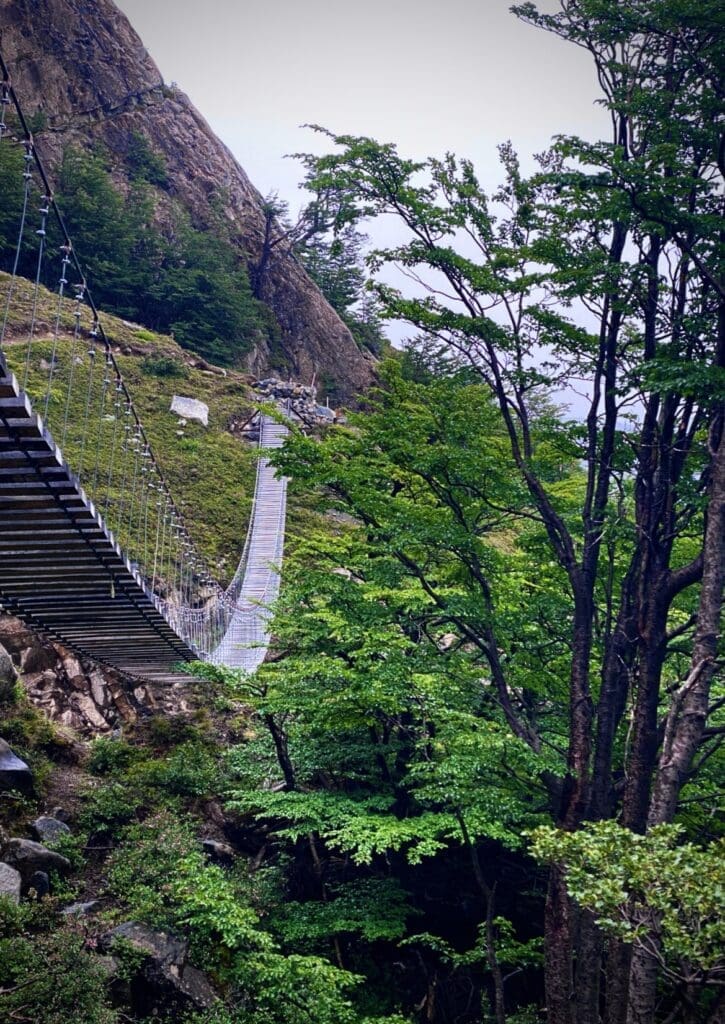
The W Trek may be the most popular trail in Torres del Paine but it certainly isn’t the only walking route that will let you experience this awesome corner of Chilean Patagonia. Usually open from November to April, there are also two route extensions that take you counterclockwise on the trail but promise to whisk you even higher into the clouds as you explore the mountains and glaciers. They are:
If you have more time to spare and are up for an extended trek, definitely try out one of the treks above.
18. Where to go after the W Trek
You’ve got a few options for onward travel once you’ve finished the W Trek. The most obvious and popular place that hikers return to is Puerto Natales. Many trek packages even include a drop-off back in that town, which has become a bit of a buzzy outdoors hub in recent years, touting craft beer emporiums and wine tasting establishments.
Puerto Natales also happens to be the best base for launching boat trips through the stunning fjords of Chilean Patagonia, including to the far-flung Tierra del Fuego for penguin watching and the Serrano Glacier a little closer by.
You might also want to use this opportunity to cross over into Argentinian Patagonia. The W Trek takes you very close to the border and there are regular buses that make the trip up to towns like El Calafate (5 hours) and El Chaltén (nine hours) from Puerto Natales.
It’s a top option for continuing your adventures through the Andes, opening up hikes under the Fitz Roy (arguably the most famous mountain in Argentina) and visits to the Perito Moreno Glacier (a UNESCO site that showcases huge chunks of ice peeling off a glacier tongue).
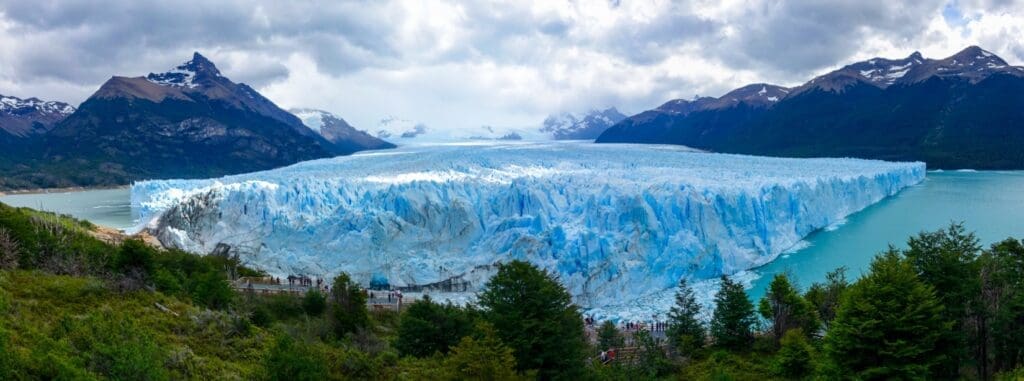
19. Visas for Chile
There’s a long list of 90 countries that get visa-free access to Chile, including virtually all of the European Union, the United Kingdom, and the United States. That means administrative work at the border or prior to departure shouldn’t be too much of an issue if you’ve got your heart set on the W Trek.
Notable exceptions include Australian citizens, who are no longer charged a hefty reciprocity fee when they enter but do need to go through the process of pre-applying for a single- or multiple-entry visa. All travelers should have at least six months’ validity left on their passport before traveling.
So there you have it, a comprehensive guide to 19 things you should know before hiking the W Trek in Chilean Patagonia! I hope this post has provided you with the necessary information to help you begin planning a truly memorable adventure tour to Chile. If you feel inspired, here are the other best places to visit in Chile.

This guide has covered a lot, but you may have more questions on hiking the W Trek in Torres del Paine. If so, my experienced team here at The Explorer’s Passage would love to hear from you so please contact us and let’s chat.
We have been running trips and treks to Chile for 10 years. We pride ourselves on delivering extraordinary tours based on travelers’ needs and are humbled by our guests’ testimonials. In fact, our dedication has earned us a 5-star rating on Tripadvisor, and awards by Travel+Leisure Magazine and Newsweek. Check us out and discover why so many travelers worldwide choose us. My team and I would love for you to join us on the W Trek or any of our other adventures!
I hope to go exploring with you soon!
Cheers,
Jeff
Jeff Bonaldi
Founder & CEO
The Explorer’s Passage
About Jeff Bonaldi
Jeff Bonaldi is the Founder and CEO of The Explorer’s Passage, a premier adventure travel company. His mission is to provide travelers with the opportunity to transform their lives and the planet through the power of adventure.
Learn more about Jeff’s story and his company HERE.
Share this amazing location!

